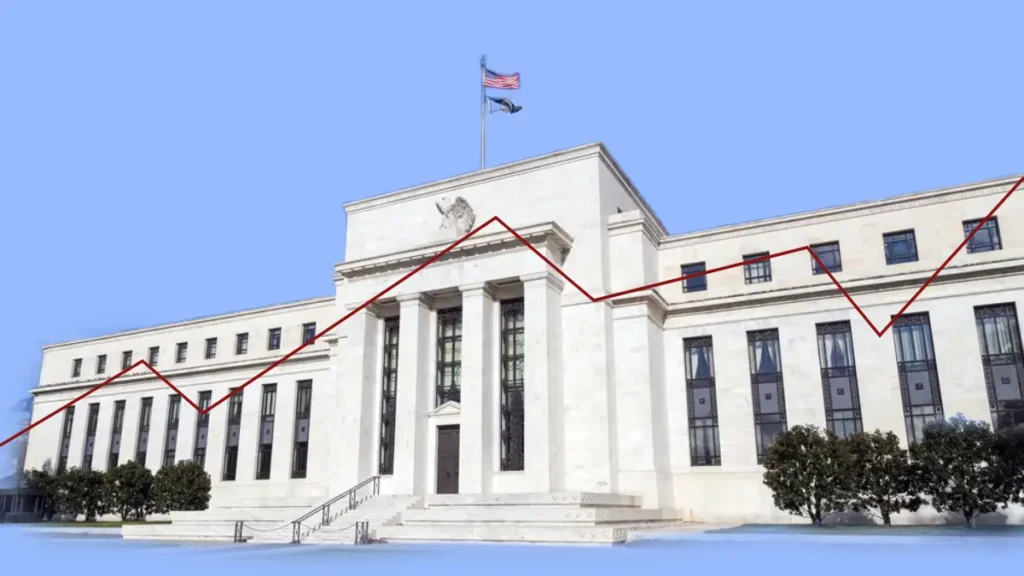Last month, Federal Reserve policymakers unanimously decided to stick with a cautious approach for a while. They acknowledged that they were likely at the highest interest rate point and indicated a plan to start reducing it in 2024.
In the minutes of the December 12-13 Federal Open Market Committee meeting released on Wednesday, participants expressed the belief that the policy rate was probably at or very close to its highest point for this tightening cycle.
However, officials emphasized their commitment to maintaining a restrictive stance in policy until there was clear and sustainable evidence of inflation moving downward.
Fed’s Optimism and Readiness on Inflation and Lending Rates
The minutes highlighted a growing optimism among participants regarding the trajectory of inflation, citing “clear progress.”
Despite this positive outlook, the committee conveyed a readiness to reduce the benchmark lending rate in 2024 if the positive trend persists. Although the exact timing of such a move remained uncertain.
According to the minutes, nearly all participants, in their submitted projections, signaled that due to positive shifts in their inflation outlooks, their baseline projections suggested a lower target range for the federal funds rate would be fitting by the end of 2024.
During the meeting, central bankers unanimously voted to maintain the benchmark lending rate within the range of 5.25% to 5.5% for the third consecutive time.
Although the Fed’s statement kept the possibility of another hike open, officials’ forecasts indicated the conclusion of the most assertive tightening cycle in a generation.
Market Response Following Fed’s Updated Outlook
The quarterly projections suggested the likelihood of three interest rate cuts in 2024, totaling around 75 basis points.
Following this updated outlook and remarks from Fed Chair Jerome H. Powell post-meeting, there was a surge in stocks and bonds, contributing to a more widespread relaxation in financial conditions.
Treasury yields saw an increase, while the S&P 500 continued to exhibit weakness. Swaps data suggested that the likelihood of a quarter-point cut in March slightly decreased.
Yet, officials held diverse individual expectations for the federal funds rate at the close of 2024.
The Fed’s “dot plot” revealed that eight officials anticipated two quarter-point cuts or fewer, contrasting with 11 officials who foresaw three or more cuts.
A subtle change in the Fed’s post-meeting statement underscored the shift in tone. Officials highlighted their commitment to monitoring various data and developments, assessing whether “any” additional policy firming is deemed appropriate.
Futures markets have been expecting six rate cuts from the Fed this year, with a probable quarter-point reduction in March. Despite these market anticipations, some Fed officials have resisted expectations of an immediate policy shift.
Powell’s Caution Amid Balanced Economic Signal
During the news conference, Powell mentioned that declaring victory over inflation was premature, although he acknowledged that the discussion about when to start “dialing back” policy restraint took place.
Officials decelerated the rate increases last year following a series of rapid hikes in 2022. Inflation has significantly cooled, registering at 3.2% on an annual basis, based on the Fed’s preferred benchmark excluding food and energy.
Participants highlighted six-month inflation readings and observed increasing indications of demand and supply moving towards a more balanced state.
Is the Economy Heading for Stability Amidst Uncertain Times?
In November, the Fed’s preferred underlying inflation gauge increased by just 1.9% on a six-month annualized basis, marking the first instance in over three years that the measure fell below the Fed’s 2% target.
Despite higher interest rates, the labor market has stayed relatively robust. Over the most recent three months, payrolls have expanded by an average of 204,000 positions, and job openings have decreased, aligning with a gradual moderation in hiring. The employment figures for December are set to be released on Friday.
Continued robust wage gains or unexpectedly strong economic growth could impede or potentially halt inflation’s movement toward the central bank’s target. The most recent projections from officials indicate the economy expanding at a considerably slower rate of 1.4% in 2024, with minimal impact on employment.
The minutes indicated that participants generally perceived a high degree of uncertainty surrounding the economic outlook.

